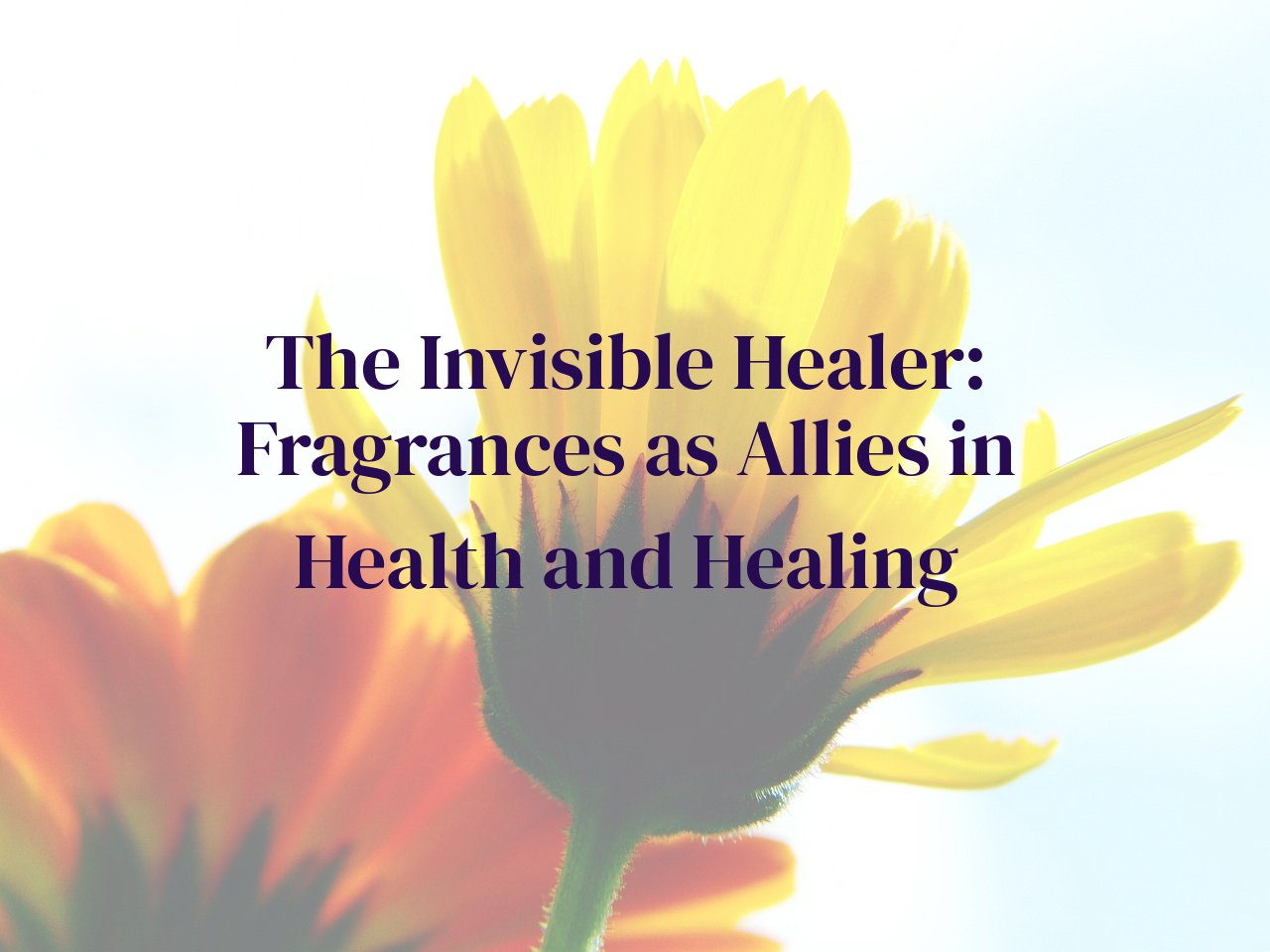
Embarking on the exploration of an often-overlooked aspect of patient care, this post delves into the subtle yet powerful world of scent and its influence on therapy and recovery processes. Through the lens of my personal experiences and expertise in medicine and dietary therapy, I will illuminate the ways in which specific aromas can not only enhance the environment but also potentially improve patient outcomes. Readers can look forward to a thought-provoking journey into the sensory dimension of healthcare, gaining insights into how fragrances can be harnessed for the betterment of patient well-being.
Table of Contents
The Underlying Science of Scent and Healing
The healing power of fragrance is not just a matter of folklore or alternative medicine; it has its roots in the physiological and psychological mechanisms that govern our sensory experiences. Our olfactory system, the body’s network for smell, directly connects to the limbic system, which is the seat of emotion and memory in the brain. This intimate connection suggests why certain scents can instantly evoke powerful emotions or memories, transporting us back to moments tied deeply with those particular smells.
Take lavender, for instance. In my personal experience, I’ve noticed that diffusing lavender oil seems to generate a palpable sense of calm in the room. Science supports this observation, pointing out that inhaling lavender has been linked to the reduction of stress hormones in the blood stream, confirming its sedative properties. This isn’t just a placebo effect; it’s backed by studies measuring physiological changes such as heart rate variability and cortisol levels.
Peppermint offers another scintillating example. Beyond its invigorating aroma, research has demonstrated peppermint’s efficacy in enhancing cognitive functions like concentration and memory. This is thought to be due to increased oxygenation and blood flow to the brain upon inhaling the essence. It’s not merely an olfactory pleasure, but a neurophysiological stimulant.
Furthermore, the scientific exploration into scent has revealed its potential in patient therapy and recovery. For those dealing with pain, for instance, the scent of green apple has curiously been shown to reduce the severity of migraines. This implies that certain scents can engage the central nervous system in a way that can alter one’s perception of pain, providing a complementary approach to pain management.
Even the realm of sleep, often disrupted in healthcare settings, can benefit from the science of scent. Research into the aroma of chamomile, known for its gentle sedative properties, indicates a potential to improve the quality of sleep among patients. This is a significant boon, considering restful sleep is critical to the healing process. In essence, a strategic and informed use of scents has the power to not only soothe the mind but to catalyze bodily recovery.
The interplay between scent and healing, while still an evolving field, is grounded in substantive scientific research. In my explorations and practical applications, the transformative effects of fragrance have been unmistakable, and I’m eager to dive deeper into the scientific discourse that supports these observations. As we continue to unearth the mysteries of olfactory influences, the promise of fragrances as invisible healers in health and healing grows ever more compelling.
Case Studies: Scent’s Impact on Patient Recovery
In my journey as a health and wellness blogger, I’ve encountered compelling case studies that robustly illustrate the significant role fragrance plays in patient recovery. A particular case that stands out involves a post-surgical group who were exposed to lavender oil diffusion. The group reported notably lesser pain levels compared to the control group, suggesting that certain scents could be utilized as complementary pain management strategies. Such outcomes have prompted a closer examination of scent as a non-invasive modality for enhancing patient comfort postoperatively.
Another case study worth mentioning involved patients with chronic insomnia. A select group was treated with a blend of essential oils, primarily composed of lavender and chamomile, at bedtime. Remarkably, within a few weeks, these patients experienced improved sleep quality and duration, emphasizing scent’s potential in addressing sleep disorders without the side effects typically associated with pharmacological treatments.
Furthermore, in a pediatric context, where anxiety can significantly hinder recovery, the implementation of vanilla-scented environments has been associated with reduced anxiety levels among children undergoing medical procedures. This evidences the psychological benefit that can arise from judicious scent application in a healthcare setting, creating a more calming atmosphere conducive to healing.
These case studies are only a snapshot of the extensive anecdotal evidence supporting fragrance as an ally in health and healing. They serve as a testament to the potential of integrating aromatherapy into conventional treatments, reinvigorating our understanding of patient-centered care that addresses not just the physical but the emotional wellbeing of individuals during their recovery journey.
Integrating Aromatherapy into Conventional Treatment Plans
Integrating the ancient practice of aromatherapy into present-day conventional treatment plans isn’t merely placing a diffuser in the corner of a hospital room; it requires meticulous incorporation and an evidence-based approach. In my personal experience as a healthcare blogger, I’ve witnessed how well-designed aromatherapy interventions have complemented medical treatments, offering a holistic edge to patient care.
Including aromatherapy begins with patient assessment, understanding individual preferences and any possible allergies or sensitivities to certain scents. It’s all about personalization. Next, is the selection of essential oils backed by scientific research—lavender for relaxation, peppermint for nausea, and eucalyptus for respiratory issues, to name a few.
Training healthcare professionals in the use of essential oils is crucial. They need to know not just the ‘what’, but the ‘how’ and ‘why’ of aromatherapy application. Nurses and other caregivers can then safely integrate these practices into daily care routines.
It’s important to consider the mode of delivery. Whether through direct inhalation, massage, or ambient diffusion, the method must align with the goals of therapy. For instance, direct inhalation might be more effective for immediate relief of anxiety, whereas ambient diffusion could be better for sustained mood enhancement.
Monitoring and documentation should be part of the protocol. Observing changes in a patient’s mood, sleep patterns, and pain levels can provide valuable feedback on the efficacy of the aromatherapeutic interventions. This, in turn, helps in fine-tuning therapy for better outcomes.
I’ve seen the smiles and the inexplicable comfort patients experience when scent becomes a part of their healing journey. It’s a subtle art, infusing a fragment of nature’s essence into a sterile clinical environment, transforming it with just a hint of fragrance, and in this mystery lies the profound power of scents as allies in health and healing.
The Psychological Dimensions of Scent in Therapy
The confluence of scent and psychological well-being is a riveting frontier in therapeutic practices. My journey through the gardens of healing aromas has time and again reinforced the potent influence scents wield on the mind. For instance, the zesty whisper of citrus can act like a beam of sunlight through a clouded psyche, sharpening alertness while hooking corners of moods to hoist them upward. Delving deeper, let’s consider lavender, the quiet maestro of tranquility — studies have consistently shown its capacity to ease anxiety, ushering in a tranquility that often eludes the grasp of those struggling with stress-related disorders.
Another fascinating aspect emerges with peppermint’s vivifying aroma. This is not just a scent but a cheerleader for cognitive performance, enhancing memory and increasing vigilance. In contrast, rose heralds a different type of psychological succor, often acting as a balm for the heartache embedded in grief, tenderly nurturing the emotional healing process.
Contemplating the waft of eucalyptus, I’ve observed its role in respiratory therapy, but less discussed is its influence on mental clarity—a mental decongestant if you will. This scent plays the double agent, aiding bodily functions while simultaneously ushering in an invigorating mental breeze that can blow away the cobwebs of the mind. Similarly, the earthy musk of sandalwood has become a staple in my personal meditative practices for its grounding properties, which seem to tether the swirling chaos of thoughts to a more peaceful state.
What is profoundly clear is that scent works not merely on a superficial level but navigates the intricate maze of human emotions, often acting as a silent therapist. The art of aromatherapy taps into the olfactory pathways that are so deeply interwoven with the emotional centers of the brain, allowing for a form of communication that words sometimes cannot achieve. Crafting olfactory experiences in therapeutic settings should be as nuanced and tailored as any psychological therapy, for the nose can unveil pathways to the mind that are as complex as they are profound.
Crafting a Scent Strategy for Health Facilities
Creating a scent strategy for a health facility is a delicate process, requiring a blend of empirical research, sensory psychology, and thoughtful consideration of patient needs. During my years of blogging, I have encountered many instances that reveal the potency of fragrance as an adjunct to healing. Drawing from these encounters, here’s an expressive guide to cultivating an olfactory environment geared towards health and healing.
Firstly, one must understand the demographic of the facility. A children’s ward might benefit from gentle, soothing fragrances such as lavender or chamomile, which promote calm and may facilitate sleep. Contrastingly, areas frequented by patients battling depression may find uplifting citrus scents supportive in enhancing mood and energy levels.
Another key element is choosing the right diffusion method. High-traffic zones may utilize HVAC scenting systems for a subtle, continuous presence, whereas individual rooms could employ more personalized means like oil diffusers, which patients can control as desired. This offers a dual benefit: the therapeutic advantage of the scent and the empowerment of the patient through a sense of control over their environment.
Developing a scent profile that aligns with the facility’s treatment philosophy is crucial. A holistic center may prioritize natural, plant-based scents that align with their organic ethos, while a high-tech surgical center might opt for clean, crisp aromas that mimic the sterile precision of their services. As a blogger, I’ve found that congruence between service and scent amplifies patient trust and comfort.
It’s important to employ a dynamic scent calendar—rotating scents according to season, holidays, or even time of day. This reflects the facility’s attentiveness to environmental changes, which can foster patient attunement to the passage of time and nature’s rhythms, often lost in the monotony of long-term care.
Lastly, continuous assessment is vital. Soliciting feedback through patient surveys, keeping abreast of the latest research in olfactory therapy, and adapting the strategy to evolving patient needs—these ensure that the scent strategy remains not only inoffensive but also supportive of the intrinsic mission of healing and comfort within the health facility.
Conclusion
In summary, our olfactory senses play a pivotal role that transcends merely enjoying pleasant smells. The strategic application of scent within therapeutic settings opens up a world of untapped potential for enhancing patient experiences and outcomes. As we continue to unravel the intricate connections between the mind, body, and our environment, incorporating scent into patient therapy and recovery appears not just beneficial, but essential for a holistic approach to health.



